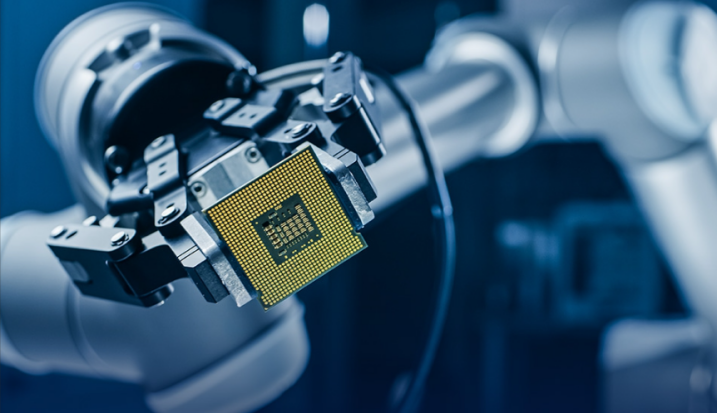PCBMASTER Brings You - PCBA Manufacturing An Analysis of the Core Competitiveness of the Global Electronics Industry
Author: Jack Wang
In the field of electronic manufacturing with increasingly fine - grained global division of labor, PCBA (Printed Circuit Board Assembly) serves as the core carrier of electronic devices. Its technical level directly impacts the performance and reliability of end - products. For foreign trade practitioners, a deep understanding of the technical core and industry trends of PCBA is the key to unlocking the international market.
I. PCBA: The "Central Nervous System" of Electronic Products
PCBA is not simply a pile of components. Instead, it integrates hundreds of components such as resistors, capacitors, and chips onto a PCB substrate through precise processes to form a complete circuit system. Its core value is reflected in three aspects:

1.Signal Transmission Efficiency: High - precision impedance control (±5%) ensures the integrity of high - speed signals, making it suitable for high - frequency scenarios such as 5G communication and AI servers.
2.Thermal Management Capability: Through copper thickness design (1 - 6 oz) and heat - dissipating via processes, it addresses the temperature rise issues of high - power devices (such as IGBTs and GPUs).
3.Miniaturized Integration: The 01005 package (0.4mm×0.2mm) component mounting technology meets the space constraints of wearable devices and medical electronics.
II. Four Technical Indicators Concerned by International Buyers
1. Welding Process: The Integrated Innovation of SMT and THT
①SMT (Surface Mount Technology): Nitrogen reflow soldering furnaces are used, with an oxygen content of less than 500 ppm to reduce solder joint oxidation. The yield rate can reach 99.95%.

②THT (Through - Hole Technology): For high - power components, selective wave soldering is employed, which increases the solder joint tensile strength by 30%.

③Mixed Mounting Process: The automotive electronics field commonly adopts an SMT + THT dual - line design, which is compatible with BGA (Ball Grid Array) and connector assembly.

2. Testing and Verification System
①AOI (Automated Optical Inspection): It can identify solder defects at the 0.01mm level through 3D confocal technology.
②X - Ray Inspection: It uses penetrating imaging to detect hidden virtual soldering of BGA chips.
③Functional Testing (FCT): It conducts a 72 - hour aging test under simulated terminal environments, with the failure rate controlled at ≤50 DPPM.



3. Material Selection Strategy
①High - Reliability Substrates: Military - grade PCBA uses Isola FR408HR boards (with a Tg value of 180°C), and its resistance to CAF (Conductive Anodic Filament) is increased by 5 times.
②Environmental Compatibility: Lead - free solders (Sn96.5/Ag3.0/Cu0.5) that comply with RoHS 2.0 and REACH regulations have a melting point of 217°C - 220°C.
③Adaptation to Special Scenarios: For high - frequency circuits, Rogers RO4350B material (with a dielectric constant of 3.48±0.05) is preferred.


4. Design for Manufacturability (DFM)
International purchasers generally require suppliers to provide DFM analysis reports, covering:
①Whether the component spacing meets the IPC - 7351 standard.
②Whether the panel design optimizes the V - CUT stress.
③Whether the stencil opening plan can avoid solder ball problems.
III. Breaking Through in the Global Market: The Dual Barriers of Technology and Service
1. Flexible Manufacturing Capability
①Multi - variety and Small - batch Production: It supports sample production of 1 - 100 pieces and can be delivered within 48 hours (including a flying probe test report).
②Rapid Production Changeover: Through the digital MES system, the product model change - over time is ≤2 hours.

2. Certification Qualification Matrix
①Quality System: ISO9001:2015 + IATF16949 (for automotive electronics).
②Safety Certifications: UL certification (for access to the US market) + CQC (China Compulsory Certification).
③Industry Standards: IPC - A - 610 Class 3 (aerospace - grade standard).
3. In - depth Supply Chain Collaboration
①It establishes VMI (Vendor Managed Inventory) cooperation with original manufacturers such as TI, Murata, and TDK to ensure material traceability.
②It provides a one - stop delivery solution that includes PCBA, enclosure assembly, and aging testing, reducing the number of customer supply chain levels.
IV. Empirical Cases of Industry Applications
①Industrial Control Field: Custom - made high - temperature - resistant PCBA (operating temperature: - 40°C ~ 125°C) for a German customer, which passed the EN61373 anti - vibration certification.

②Medical Device Field: Adopted biocompatible coatings, passed the ISO13485 certification, and supplied products in batches to a US ventilator manufacturer.

③New Energy Field: Developed a 6 - layer blind - buried via PCB solution, and the BMS (Battery Management System) PCBA has a cycle life of over 8,000 times.

V. Five Key Questions for Selecting a PCBA Supplier
1.Does it have the ability to simulate high - speed signals (such as using HyperLynx software)?
2.Can it provide conformal coating processes in accordance with the IPC - CC - 830B standard?
3.Does it have experience in the VDA6.3 process audit for automotive electronics?
4.Can the minimum line width/line pitch reach 3/3 mil (0.075mm)?
5.Does it support the J - STD - 001 welding standard and the IPC - A - 600 acceptance standard?
In the context of the global electronic industry's upgrade towards intelligence and greenness, PCBA suppliers need to transform their technical accumulation into value perceivable by customers: lower comprehensive costs (COGS), faster time - to - market (TTM), and higher mass - production consistency (CpK≥1.67). Only by deeply understanding the technical requirements and business logic of international buyers can they build a sustainable moat in foreign trade competition.
If you want to know more, please feel free to consult PCBMASTER at any time. www.pcbmaster.com